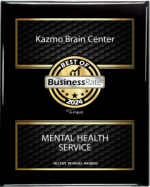What is Chiropractic?
The word ‘chiropractic’ comes from the Greek words cheir (meaning ‘hand’) and praktikos (meaning ‘done’) – namely, done by hand. Chiropractors are primary contact practitioners (which means they can see patients without a referral from a GP). They focus on treating the spine by using their hands to examine and treat health conditions related to the bones, muscles, and joints (musculoskeletal problems).
Chiropractors are trained to recommend exercises to treat and rehabilitate health conditions related to the bones, muscles, and joints, as well as to provide nutritional, dietary, and lifestyle advice.
They use a broad range of methods to diagnose musculoskeletal problems, including hands-on clinical examination, and diagnostic imaging such as x-rays or MRIs. These and other diagnostic methods are used to determine when chiropractic treatment is appropriate.
If chiropractic care is not appropriate, or if your health condition needs to be co-managed with other health care professionals, your chiropractor will refer you to the appropriate health care provider.
In many cases, such as lower back pain, chiropractic care may be a person’s primary method of treatment. For some medical conditions, chiropractic services may complement or support medical treatment by relieving the musculoskeletal aspects associated with the condition.
You do not need a referral to see a chiropractor unless you are seeking treatment through Veterans’ Affairs or the Medicare Chronic Disease Management program.
When to Consider Chiropractic Care
Painful joint and back problems can be caused by work, accidents, sports injuries, household chores, and even the stress of daily living.
Chiropractic care may help if you are experiencing aching joints or muscle pain that is affecting your ability to get through the day or preventing you from doing your favorite activities. It can also help maintain a healthy spine and joint function, even if you do not have painful symptoms.
People commonly visit a chiropractor for help with:
- back pain
- neck pain
- headache
- whiplash
- strains and sprains from daily activities
- overuse injuries
- work and sports-related injuries
- arthritis
- restricted movement in the back, shoulders, neck, or limbs
Chiropractic Examination
When you attend a chiropractic examination your chiropractor will:
- conduct a thorough medical history
- look at your vital signs – namely your body temperature, pulse, respiration rate (breathing rate), and blood pressure
- visually inspect for spinal curves or other visible health indicators
- use their hands to palpate (feel) your spine and the muscles and other soft tissues that support it
- conduct orthopedic examinations – these are examinations designed to detect health conditions relating to the spine, bones, joints, muscles, and soft tissues, including ligaments and tendons. Among other things, an orthopedic exam includes moving the joint and measuring its range of movement
- conduct neurological examinations – these are examinations designed to assess the function of your motor, sensory and cranial nerves (such as testing your reflexes and testing for numbness).
Where required, your chiropractor can also refer you directly for other diagnostic tests such as an MRI or x-ray.
Based on their examination, your chiropractor will give you a differential diagnosis (that considers all of the potential causes of your primary complaint) and a working diagnosis (the most likely cause of your primary complaint). They will explain this diagnosis, including its natural history (when you would expect it to resolve), the treatment options available to you, and any benefits or risks associated with those treatments.
Chiropractic Treatments
Common chiropractic treatments include a range of different techniques, such as:
- spinal manipulation, sometimes called an adjustment – using the hands to apply controlled force to a joint of the spine
- mobilization – gentle movement of the joint to increase its range of motion
- exercises
- reassurance
- application of heat or ice
- stretching
- soft tissue techniques – such as massage
- activity modification – suggesting how to make changes to your day-to-day activities to alleviate discomfort and enable recovery
- lifestyle advise – such as healthy eating and physical activity advice
- physiologic therapeutics – such as the use of ultrasound, laser, or TENS
- orthotics – shoe inserts that help support the feet and improve posture and alignment
- drop piece table technique – the use of a specially designed table to help mobilize a joint in a controlled way
- treatment of other joints, including feet, ankles, shoulders, wrists, elbows.
Your chiropractor will discuss these with you as part of a shared decision-making process.
Spinal manipulation
One of the most common and well-known therapeutic procedures performed by chiropractors is spinal manipulation (sometimes referred to as a ‘chiropractic adjustment’, although this technique is also used by osteopaths and physiotherapists). The purpose of spinal manipulation is to restore joint mobility by manually applying a controlled force into joints that have become restricted in their movement as a result of a tissue injury.
Tissue injury can be caused by a single traumatic event, such as improper lifting of a heavy object, or through repetitive stresses, such as sitting in an awkward position with poor spinal posture for an extended period of time. In either case, injured tissues undergo physical and chemical changes that can cause inflammation, pain, and diminished function.
Manipulation or adjustment of the affected joint and tissues restores mobility, thereby alleviating pain and muscle tightness, allowing tissues to heal.
Spinal manipulation is very safe when performed by a trained, registered practitioner, although some people may experience mild soreness or discomfort following treatment. This usually resolves within 12 to 48 hours. Your chiropractor will discuss this with you before any intervention in a process called informed consent.
What Does a Chiropractor do for Lower Back Pain?
Doctors of Chiropractic Medicine (DCs) don many different hats during the course of their careers. However, for most of us, going to the chiropractor means one thing: having our necks, backs, and hips adjusted.
During a chiropractic adjustment, a DC uses spinal manipulation to realign the bones and joints of our backs. This means that the chiropractor uses his or her hands to deliver a high-velocity, low-amplitude thrust (or HVLA) to our spines. Although applying force to a sore joint may seem counterintuitive, chiropractors are trained to dislodge “stuck” joints. And, what’s more: they can restore these frozen joints without causing further injury to our backs.
In addition, your DC can use HVLA to treat a variety of disorders that affect your skeletal, muscular, and nervous systems. For example, some of these neck and back issues include:
- Sports Injuries: Chiropractic care can be used to treat a wide array of sports injuries, including torn muscles, strained tendons, and/or sprained ligaments.
- Whiplash: DCs treat many different injuries that affect the spine, but one of the most common is whiplash. Whiplash injuries occur when a collision, such as a car accident, causes the head to whip back and forth on the axis of the neck.
- Migraines: These intense headaches often stem from neck pain and respond well to chiropractic treatment.
- Sciatica: A form of a pinched nerve, sciatica often results from improper alignment of the lumbar spine. DCs use HVLA to reverse or ease sciatica symptoms, such as leg pain.
- Myofascial Pain: This disorder occurs when the fascia that bounds your muscles together becomes inflamed, causing painful “knots” or “adhesions” to form in the muscle. If you develop this syndrome, then you might need a chiropractor to release these “trigger” points.
Aside From Adjustments… What Does a Chiropractor Do?
But, when it comes to chiropractic care, HVLA merely scratches the surface of what your DC can do. For example, in addition to adjustments, some DCs also provide:
Simple Therapies for Muscle Pain
- Hot & Cold Therapy: Many joint injuries, as well as arthritis, heal fastest when alternating rounds of hot & cold therapy are applied. As such, your DC may use ice packs to reduce local swelling or inflammation, before switching over to heat. In contrast, heating pads or wraps serve to increase (instead of reducing) blood flow. This method draws white blood cells with healing factors to the target area.
- Massage Therapy: Before attempting HVLA, your DC may use massage therapy to loosen up your muscles and prevent injury. In addition, your chiropractor may employ a licensed massage therapist (MT) on site. A certified MT may offer more advanced techniques.
- Hydrotherapy: You don’t have to go to a spa anymore to get your hydrotherapy fix. Many chiropractic offices now offer whirlpool therapy for patients with sore muscles, arthritis, or paraplegia.
- Lifestyle Education: Not only do chiropractors offer each of the services outlined above (…plus many more!), but they also serve as lifestyle coaches and ergonomic experts. (In fact, weight gain and poor posture at work are leading causes of back and neck pain!) DCs provide diet advice, strengthening exercises, and those much-needed tips for reconfiguring your office.
Looking for simple, pain-free solutions to neck and back pain? Consider visiting your chiropractor. However, don’t forget to consult with a Kazmo Brain Center who can serve as your home base. A qualified physician can guide you through the many phases of the recovery process–and help you get your life back!
Kazmo Brain Center is a counseling center in Frisco, Texas specializing in mental health counseling and will work with you toward a happier and more satisfying life.
If you or your loved ones are facing any mental illness and you think that you need help, Request an appointment at the Kazmo Brain Center and we are here to help.
Resource:
www.betterhealth.vic.gov.au
www.spine-health.com







